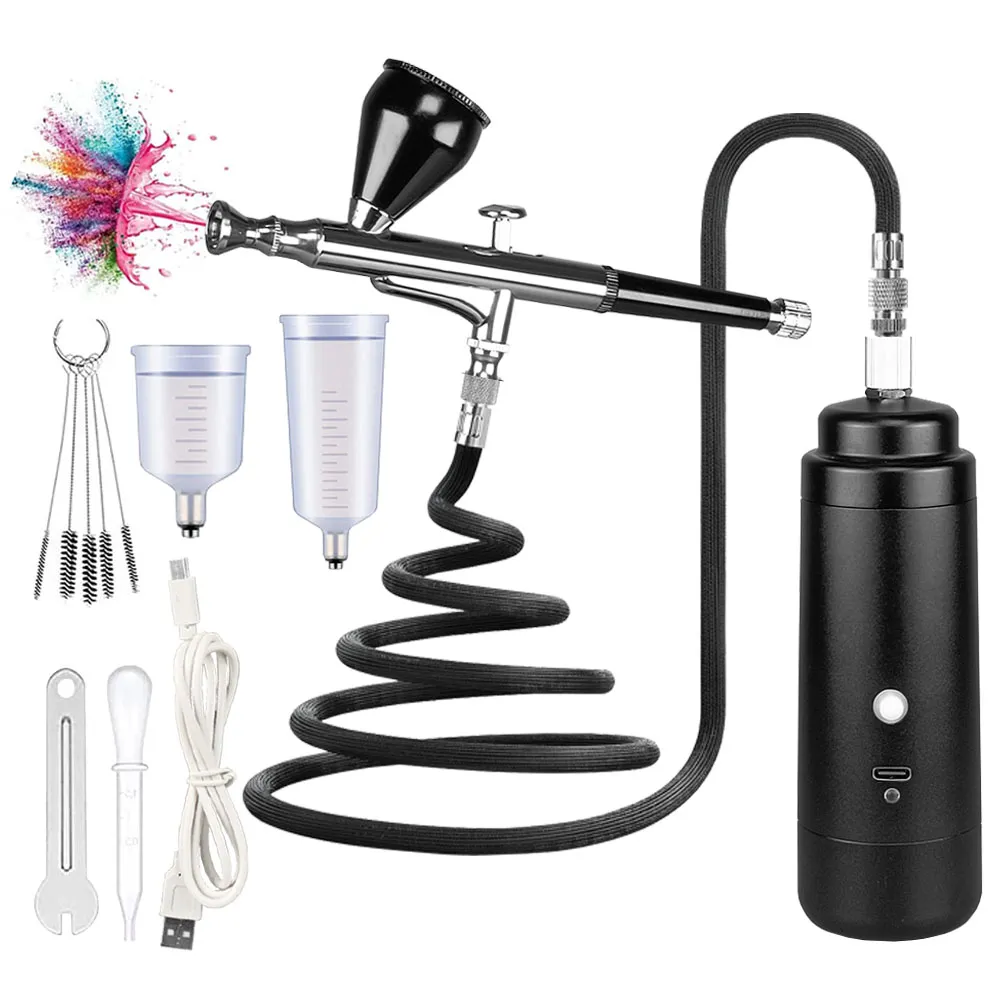News
What is an airbrush used for?
The airbrush, a handheld pneumatic device that atomizes liquid media into a fine mist, has evolved from a niche artistic tool into a cornerstone of modern craftsmanship and industrial design. Since its invention in the late 19th century, the airbrush has transcended its original purpose, finding applications in fields as diverse as fine art, automotive customization, cosmetics, and even medical prosthetics. This article delves into the multifaceted uses of the airbrush, exploring its technical principles, cultural impact, and its role in shaping aesthetic and functional outcomes across industries.
1. Historical Roots: From Patent to Palette
The airbrush was patented in 1876 by Francis Edgar Stanley, initially conceived as a tool for retouching photographic negatives—a revolutionary solution in an era dominated by cumbersome darkroom techniques. By the 1880s, artists like Charles Burdick refined the design, enabling smoother gradients and laying the groundwork for its adoption in illustration. The Art Nouveau movement embraced the airbrush for its ability to mimic organic textures, while early 20th-century commercial illustrators used it to create hyper-realistic advertisements. This historical trajectory reveals the airbrush as a bridge between technological innovation and artistic expression.
2. Technical Mechanics: Precision Through Atomization
At its core, an airbrush operates by mixing compressed air with pigment (paint, ink, or dye) in a chamber, then expelling the mixture through a nozzle. The critical distinction between single-action (airflow and paint release controlled by one trigger) and double-action (separate controls for air and paint) models determines its precision. For instance, a double-action airbrush allows artists to modulate line thickness from hair-thin details to broad washes by adjusting the trigger’s pressure and distance from the surface. This technical adaptability underpins its versatility.
3. Applications Across Domains
A. Fine Art and Illustration
Airbrushing revolutionized hyperrealism and surrealism. Artists like H.R. Giger (designer of Alien’s biomechanical aesthetic) employed airbrushes to create otherworldly textures, while automotive and sci-fi illustrators of the 1960s–80s relied on the tool for glossy, futuristic visuals. Unlike traditional brushes, the airbrush eliminates visible strokes, enabling seamless gradients ideal for skin tones in portraiture or ethereal skies in landscapes.
B. Automotive and Industrial Design
In automotive customization, airbrushes are indispensable for intricate pinstriping, flame designs, and photorealism on vehicles. The tool’s precision allows for micron-level control over metallic paints and clear coats, critical for achieving depth in candy finishes or ghost flames. Similarly, industrial designers use airbrushes to prototype product textures—simulating brushed metal or weathered surfaces on 3D models.
C. Cosmetic and Medical Fields
The cosmetics industry leverages airbrushes for high-definition makeup, offering long-lasting, poreless coverage in film and bridal applications. In medical prosthetics, airbrushing enables realistic skin tone matching for prosthetic limbs, using layered silicone paints to replicate veins, freckles, and melanin variations—a fusion of artistry and empathy.
D. Textile and Nail Art
T-shirt designers use airbrushes to create gradient-heavy, psychedelic patterns, while nail artists achieve ombre effects and miniature landscapes with surgical precision. The tool’s speed and consistency make it ideal for mass production in textile printing.
4. The Digital Age: Adaptation or Obsolescence?
The rise of digital tools like Photoshop and UV printers has displaced traditional airbrushing in some sectors (e.g., photo retouching). However, the airbrush persists as a tactile, analog counterpart to digital workflows. Hybrid approaches now emerge: Artists scan airbrushed textures into digital compositions, or use CNC-controlled airbrushes for large-scale murals. Meanwhile, hobbyist communities thrive, with social media platforms showcasing airbrushed sneakers, scale models, and body art.
5. Cultural Symbolism: Rebellion and Nostalgia
The airbrush carries cultural baggage. In the 1970s–80s, it became synonymous with counterculture—adorning van murals with wizards and dragons—and later, kitsch (e.g., airbrushed T-shirts at tourist hubs). Yet, its resurgence in streetwear and custom sneaker culture reflects a nostalgia for handmade authenticity in a digitized world.
Conclusion: The Airbrush as a Microcosm of Creativity
The airbrush is more than a tool; it is a testament to human ingenuity’s ability to merge art and engineering. From photorealism to prosthetic realism, its applications reveal a common thread: the pursuit of perfection through controlled imperfection. As technologies advance, the airbrush endures not by resisting change but by adapting—spraying its way from Victorian-era patents to the Instagram era, one atomized particle at a time. Its future lies in its past: a device that defies categorization, forever oscillating between craft and industry.
